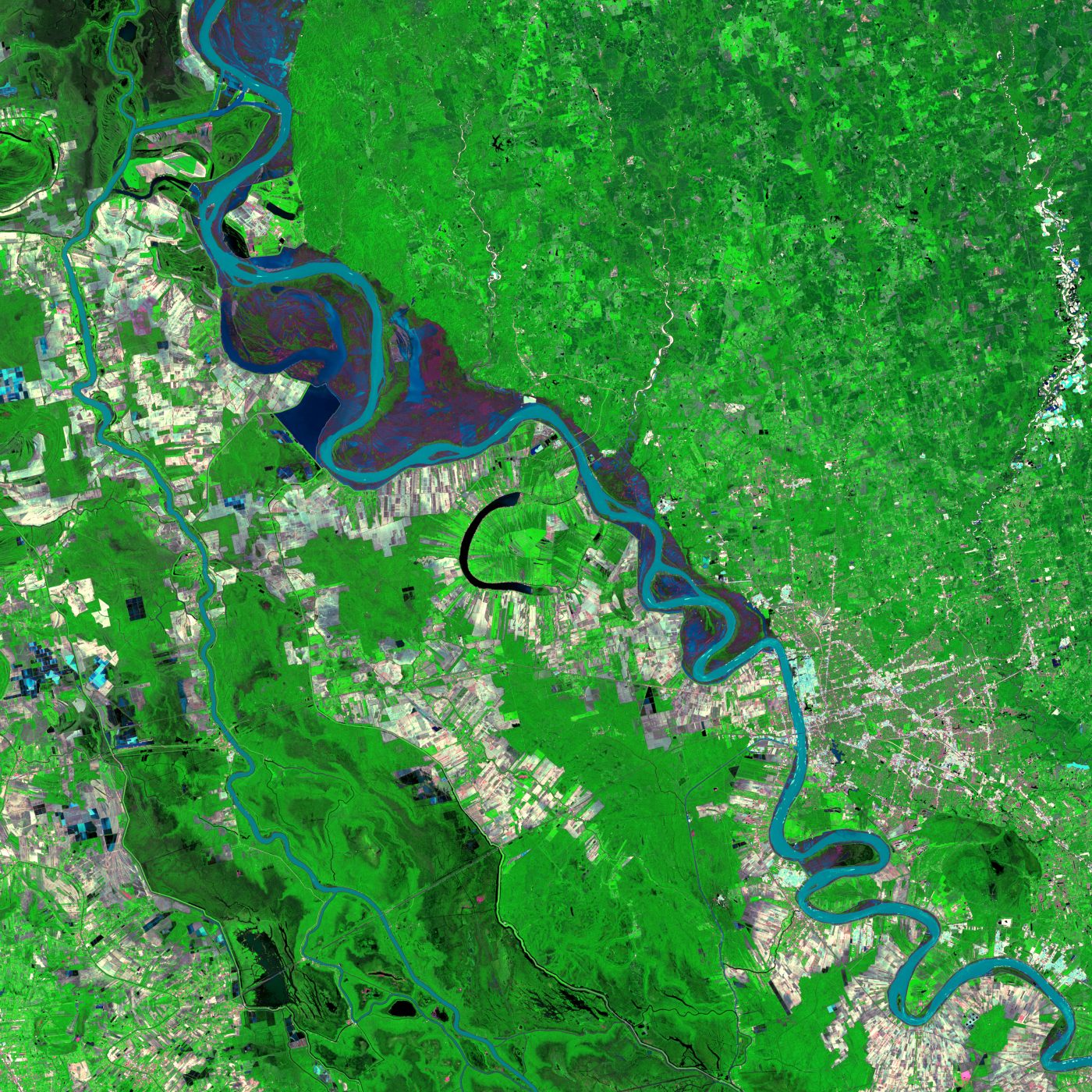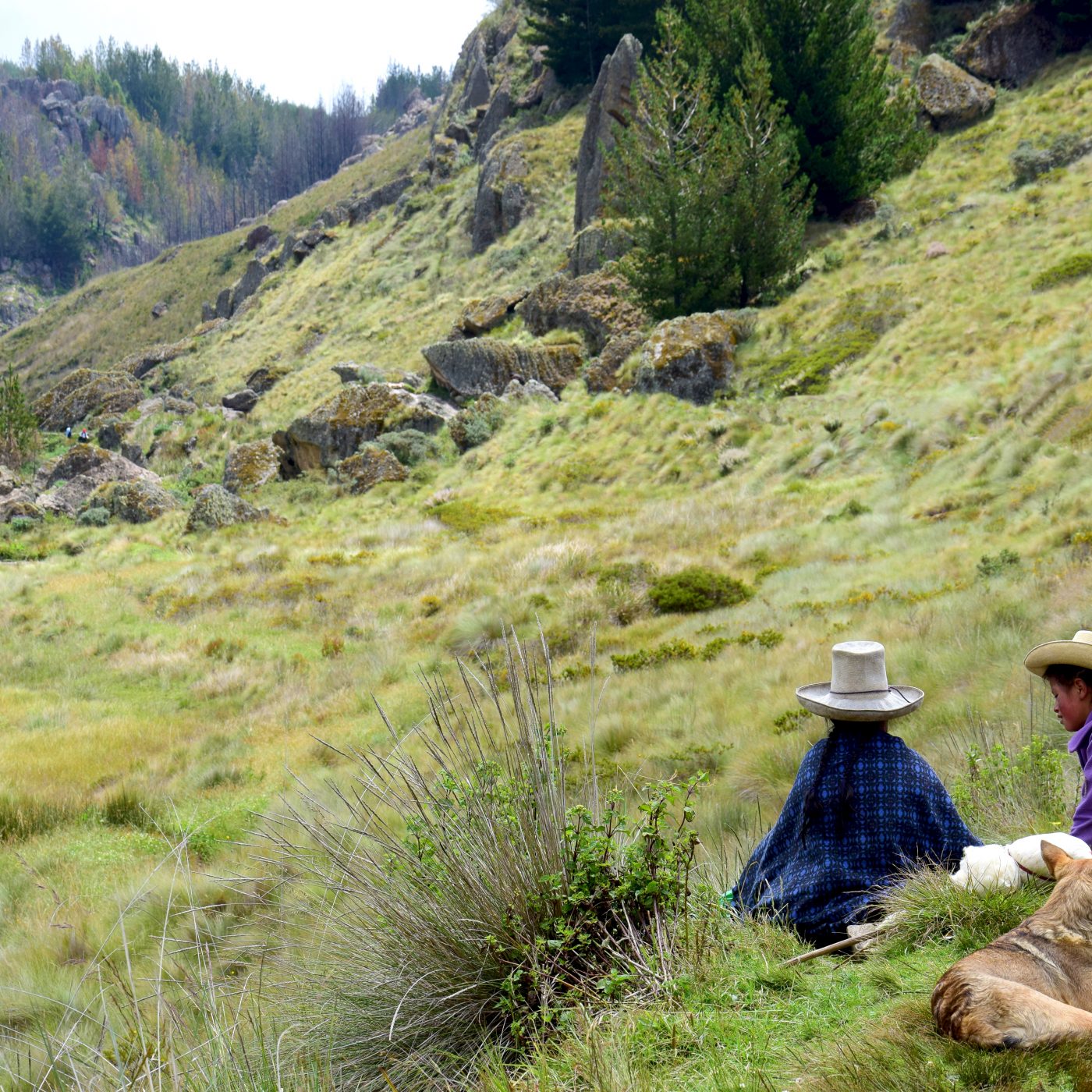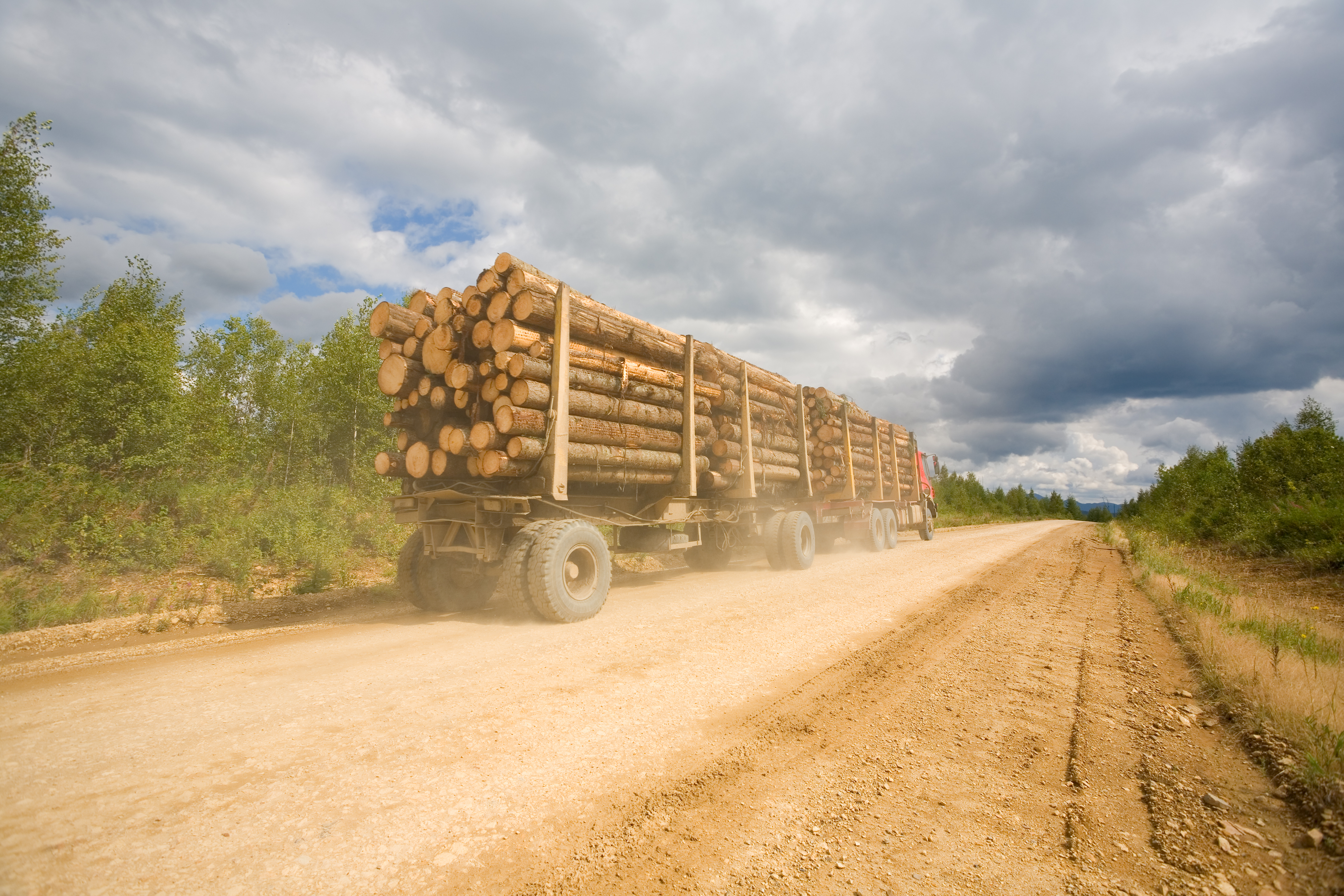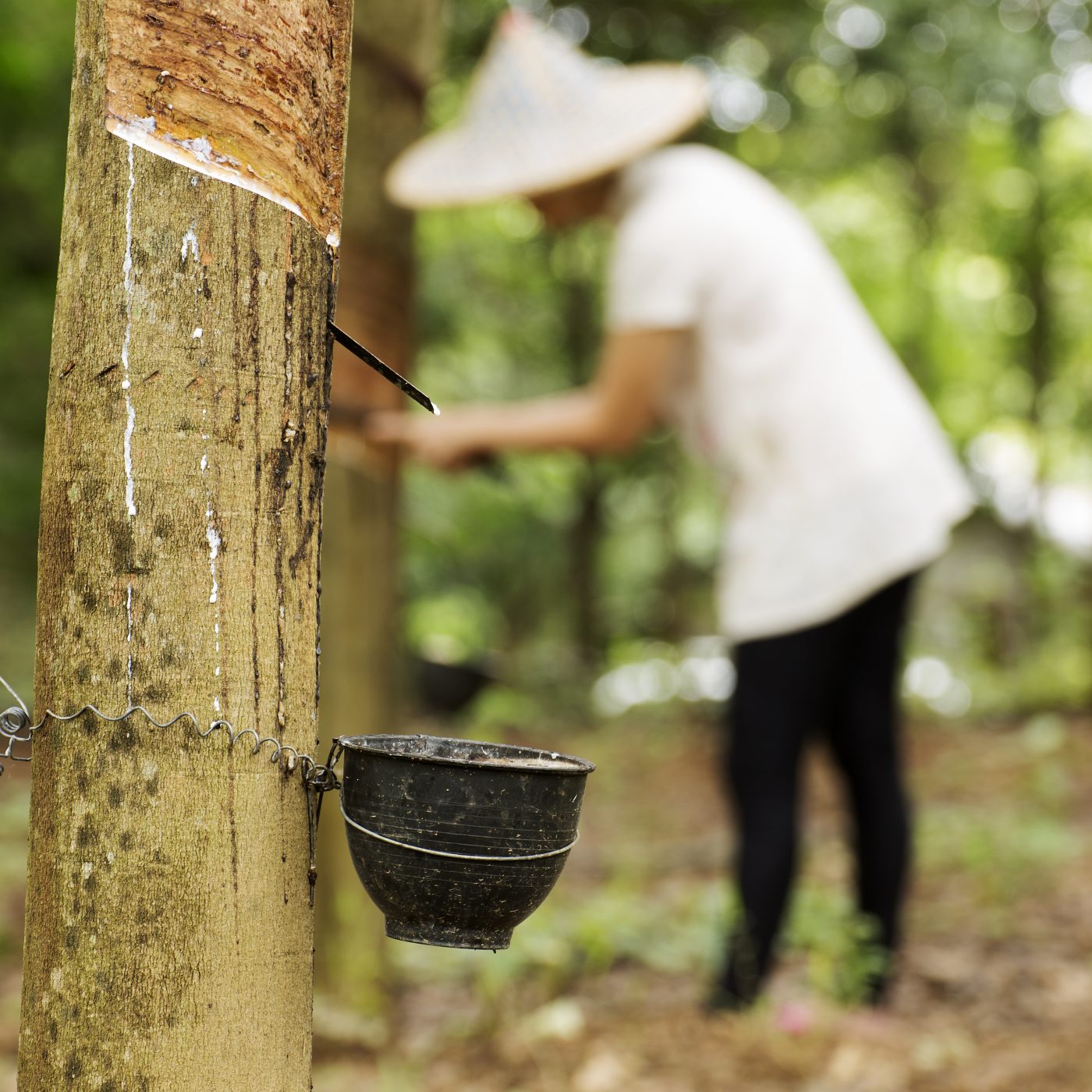It’s time to build a shared blueprint for global investments in nature.
Investing in sustainable land use and ecological restoration is our best strategy for flipping the switch on global emissions. Restoring and preserving high-carbon ecosystems, switching to climate-friendly agriculture, and practicing sustainable timber management: these are proven approaches that are ready for quick deployment, and which will have knock-on benefits for local communities and livelihoods.
What is still missing is the financial strategy. That’s where we come in.
Building a Shared Blueprint for Global Investments in Nature: Our Vision
Forest Trends takes a three-pronged approach to scaling coordinated investments in natural climate solutions:
(1) We host high-impact convenings that bring together decision-makers from across sectors and geographies to coordinate actions.
(2) We generate cutting-edge data, market analysis, and journalism, for which we’ve been given the nickname the “Bloomberg of environmental markets” – and we provide it all free of charge.
(3) We collaborate with strategic partners to demonstrate innovative financing approaches in practice.

We’re launching integrated financing models for water, biodiversity, and climate.
Healthy forests and other ecosystems are inherently multifunctional. But many conservation investments still focus on single outcomes. For example, utilities pay for reforestation projects to ensure clean water supplies. Cities manage surrounding forests for protection against wildfires and floods. National governments and the business sector plant trees for climate neutrality. And NGOs and philanthropists pledge to restore forested landscapes to reverse the biodiversity crisis. There’s rarely coordination between these efforts, even though they share the same strategy.
We are missing an opportunity to design financing strategies that bring together multiple funding streams in pursuit of multiple positive outcomes. By integrating investments, we get bigger projects, better ecological impacts, and greater resilience to financing risk.
Most importantly, integrated finance means that instead of competing for limited philanthropic and impact investment funds, project developers can focus on getting results.
Launching Integrated Financing Models for Water, Biodiversity, and Climate: Our Vision
One key entry point for Forest Trends is water security. Countries will spend trillions on water infrastructure in the coming decade. Interest is growing in the potential of “natural infrastructure” (such as forests, wetlands, and grasslands) to safeguard clean, reliable water supplies. If we can demonstrate the climate, disaster risk reduction, and biodiversity benefits from water sector investments, we expand our pool of potential investors.
In the coming years, we will work within the Latin American water sector to cultivate and foster an understanding of natural infrastructure’s climate resilience benefits. We’ll develop client-driven technical tools and financial models to increase public investments and expand private sector investment opportunities. One facet of our work will be demonstrating how bilateral climate commitments can provide significant upfront funding to reduce deforestation, while water tariffs can then provide cash flows to maintain natural infrastructure over time.
Peru is the first country in the world where national-level policy requires local natural infrastructure investments. We believe that it serves as a unique model of effective cross-sector collaboration for other countries, and a key goal is to transfer lessons from Peru to other parts of the world.

We’re partnering with communities to build an economy that keeps forests intact.
Research shows that the best way to curb forest destruction is to strengthen community land rights. In the Brazilian Amazon, we’ve seen that deforestation rates in forests guarded by indigenous and traditional communities are 11 times lower than surrounding areas.
Yet these stewards of the forest face unrelenting challenges to their control over their own territories. They also face growing pressures to clear forests for agriculture, logging, and mining.
One of the best ways we can support indigenous and traditional communities in this battle is by creating alternate economic opportunities that form a counter-balance to destructive economic forces.
Over the last twenty years, Forest Trends has worked closely with communities to provide key information, connections, capacity building, and technical assistance. With our support, these forest guardians can secure their rights, manage their forests, and pioneer new development trajectories that keep tropical forests standing — forever.
Partnering with Local and Indigenous Communities: Our Vision
We are deeply encouraged by growing recognition of forests as crucial natural climate solutions and of indigenous and traditional communities as the best stewards of these forests. Bilateral, multilateral, and private donors are steadily ramping up commitments to invest in tropical forest conservation. We also see signs that carbon markets and REDD+ will play an increasingly important role as a source of finance for forests.
It is critical that these investments benefit and reflect the values of indigenous and traditional communities.
In the next ten years, Forest Trends plans to continue investing in business and marketing strategies for forest-based value chains that sustain community enterprises and climate resilience, while respecting indigenous peoples’ “buen vivir” principles. With this strategy, we can shift entire forest regions from deforestation-based economies to forest-based economies.
Capacity building in support of strong political, economic, and cultural self-governance will remain the foundation of Forest Trends’ work with indigenous and traditional communities. To be truly sustainable, economic development must provide communities with the tools they require to secure their rights, defend their identities, and conserve the tropical forests they inhabit.

We’re building coalitions to end illegal deforestation forever.
Keeping forests intact is critical to the global response to climate shifts. Better stewardship of forests and other natural climate solutions has the potential to achieve more than one-third of the emissions reductions we need in the next decade to keep global warming under 2° Celsius.
Nearly half of all tropical forest loss in the first decade of the century was due to illegal clearing for commercial agriculture, undermining global efforts for climate resilience.
When we fail to address illegal deforestation, well-intentioned conservation policies become ineffective or even counterproductive. For example, criminal networks driven out by new regulations to protect forests for REDD+ may simply shift to a neighboring country or jurisdiction, resulting in ongoing or even increased emissions leakage.
Illegal clearing to harvest timber is another major driver of forest loss. Illegal logging is one of the most profitable natural resource crimes, generating criminal revenues of up to $150 billion per year and accounting for 15-30% of the global trade in timber products. In addition to the obvious environmental degradation, illegal logging fuels corruption, abets human rights abuses, and costs governments billions of dollars in lost tax revenue — revenue that could be used to fund basic government services.
Ending Illegal Deforestation: Our Vision
Forest Trends has nearly two decades of experience in stopping trade in illegal timber — and are positioned to transfer it to other high-risk commodities. Our data shows that the timber import legislation we’ve influenced is helping keep illegally harvested wood off the market in the EU and the US. We see tremendous opportunities to work with consumer country governments on similar strategies for beef, soy, and palm oil.
On the ground, we’ll support a portfolio of proven “integrity mechanisms” so that citizens in forest countries can hold authorities accountable for corruption.
Finally, we will engage companies and governments in charting a path from voluntary corporate action to enacting legal standards. Efforts to curtail the illegal timber trade have shown us that we need to build from voluntary action toward international regulations and agreements.

Together we can catalyze corporate action on zero-deforestation supply chains.
What are the greatest drivers of deforestation? The answer may surprise you.
Forest Trends was the first organization to show that commercial agriculture is responsible for over 70 percent of illegal forest loss in tropical and sub-tropical countries. The commodities most strongly linked to deforestation are palm oil, soy, timber & pulp, and cattle. These “big four” commodities pervade vast global supply chains and end up in virtually all consumer goods, from hamburgers and clothing to furniture and paper products, as well as in less obvious places like animal feed and packaging materials.
Hundreds of major companies have stepped forward in recent years to publicly commit to reducing or eliminating commodity-related deforestation throughout the supply chains.
Delivering on these promises to keep forests intact requires a profound transformation of commodity supply chains and markets. That’s why Forest Trends introduced the Supply Change initiative to increase transparency around company commitments to reducing commodity-related deforestation.
Catalyzing Corporate Action on Zero-Deforestation Supply Chains: Our Vision
The vast majority of corporate commitments to reduce deforestation have centered on a few commodities in a handful of countries, Indonesia and Brazil chief among them. Targeting these countries is critical, but we must not overlook other regions and less-traded commodities that can still have big deforestation impacts.
We want to expand our tracking to cover critical new countries and commodities. By shining a light on commodities such as cocoa from Ghana, rubber from Vietnam, and avocados from Mexico, we can illuminate their connection to forest loss and expand our reach into international markets. We can also create transparency on other key sustainability indicators, such as supply chains’ impacts on water supplies, biodiversity, and local communities.
Transparency is just the first step: we are already working to support companies with new tools and data that moves from supply chain transparency to full traceability of commodities — from raw materials to the final consumer product.
Our vision is to build a pipeline helping corporations take their supply chains from transparency to traceability to full sustainability, ensuring that the agricultural commodities we consume every day are produced with respect for human rights, the environment, fair labor, and good governance.






